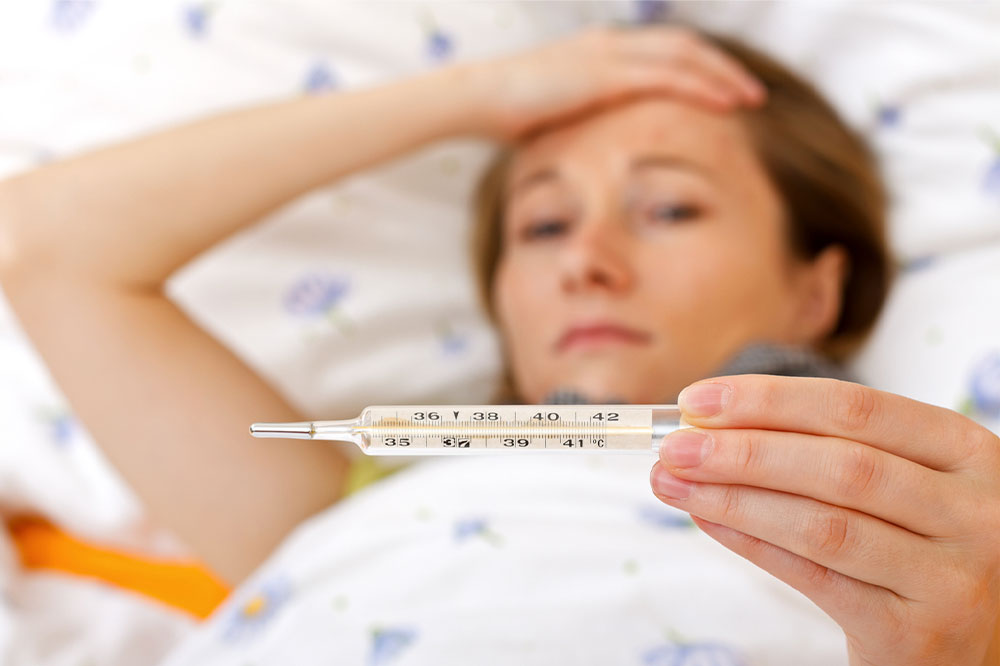9 warning signs of RSV in children

Respiratory Syncytial Virus (RSV) is a highly contagious viral infection primarily affecting the respiratory system. It is a common cause of respiratory illness in young children and infants, and it typically spreads through tiny droplets when an infected person coughs or sneezes. While most cases of RSV are mild and resemble a common cold, the virus can lead to more severe respiratory complications, especially in vulnerable people with pre-existing conditions.
Recognizing the warning signs of RSV is crucial for early detection and timely intervention to ensure the well-being of young children.
Persistent cough
RSV in children comes with the hallmark symptom of a worsening, persistent cough. Something that might start as a mild but dry cough slowly progresses into a wet cough with mucus production. The change occurs as the condition advances into a more severe infection. Children who are affected by the condition may have difficulty clearing the mucus in their lungs. This can prolong the coughing episodes, as peristaltic movement is essential to eliminating mucus from the system. In some cases, the episodes of coughing, forced or otherwise, can be serious enough to disrupt the child’s sleep cycle.
Wheezing and breathing difficulties
Another common symptom children face due to an RSV infection is the constriction of their airways. It often results from excessive inflammation in the child’s system. There is a high-pitched whistling sound during the respiratory process, especially when exhaling. Parents are advised to be attentive to their child’s breathing patterns and look for signs of rapid or labored breathing. A child’s flaring nostrils might, at times, be considered a sign of difficulty breathing. A chest that shows signs of retracting with each breath also indicates the severity of the condition and the need for professional attention.
Rapid breathing
RSV can cause the lungs’ airways to fill with mucus and become swollen. This infection is also known as bronchiolitis. In addition, the condition can also cause pneumonia. Inflammation, swelling, and mucus in the airway cause the child to breathe faster than usual. Some grunting might also accompany this rapid breathing pattern. If a child makes noises when breathing and does so at a faster pace, it could indicate an underlying RSV infection. In severe cases, the child may also experience shortness of breath, which can be concerning and require immediate evaluation.
Fever
Fever, which is a common symptom of most infections, could also be a warning sign of the presence of RSV in children. Usually, the fever accompanying this condition is low-grade, but it can sometimes be high. If a child has a fever and other respiratory symptoms, it may indicate RSV. It is essential to monitor the child’s temperature and provide appropriate fever-reducing treatment, following the dosing guidelines recommended by a healthcare professional.
Irritability and fatigue
Being unwell can turn a person irritable, piling up tiredness and fatigue. The condition can make a child feel uncomfortable, making them fussy. They may also experience increasing fatigue since the child faces increasing difficulty sleeping. In the case of an RSV diagnosis, providing the child with support and comfort is essential. Steps must be taken to ensure that they get enough rest to aid in their recovery.
Decreased appetite
With breathing difficulties, eating and swallowing could also become a task for children with RSV. These difficulties might lead to a decreased appetite in patients. It is important to ensure the children maintain their hydration levels with reduced food intake. It also helps with the loosening of mucus and better elimination. Children can try having frequent small meals along with increased levels of hydration.
Cyanosis (bluish tint)
In some serious cases, children with RSV can show the presence of a bluish tinge on their skin, nail beds, and lips. This is also known as cyanosis. This symptom is a concerning sign of inadequate oxygen levels in the blood. It could signify the need for immediate intervention by a doctor. If there is bluish or discolored skin in the child, seek emergency care without delay.
Dehydration
Breathing difficulties and decreased appetite can lead to dehydration in children with RSV. Watch for signs of dehydration, such as a dry mouth, sunken eyes, and decreased urine output. If there are any signs that the child is dehydrated, encourage them to drink fluids and seek advice.
Ear infections
RSV can sometimes lead to secondary ear infections in young children. If the child has RSV and shows signs of ear pain or pulls at their ears, it is essential to have their ears checked by a healthcare professional. Ear infections can cause additional discomfort and may require treatment.






